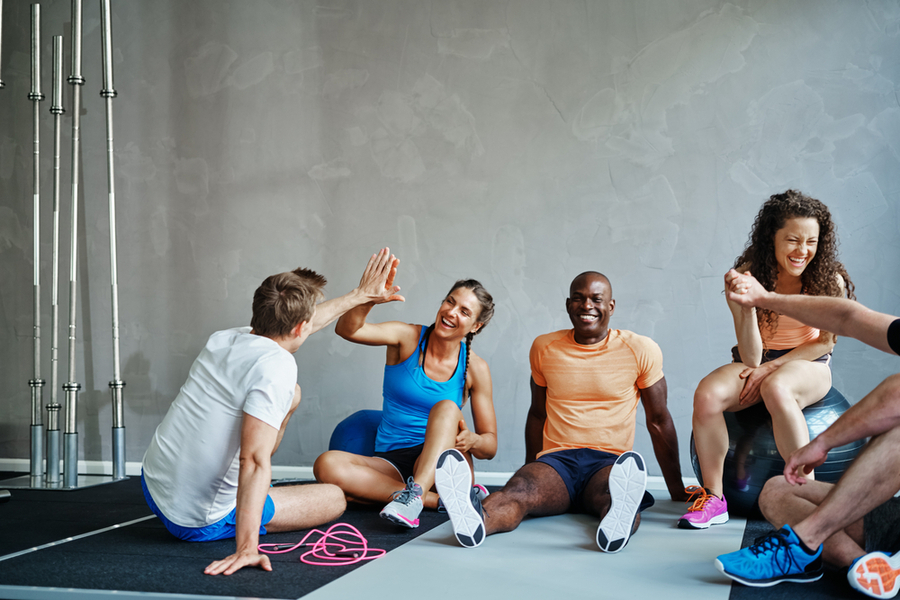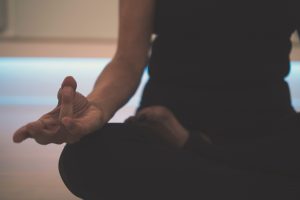Quiz: What exercise is right for you?

Take this quiz to find out which exercise type (if any) suits your personality best so you can start – or continue – your fitness journey on the right foot…
1. What are your primary fitness goals?
A. To enjoy using my body and boost some feel good hormones.
B. Improve my muscle mass and change the shape of my body.
C. Put myself to the test while getting fit in the most efficient way possible.
D. To beat stress and improve my mental outlook.
2. How much money could you spend on monthly fitness?
A. A little as possible.
B. The cost of 3-5 weekly coffees.
C. The cost of 10 weekly coffees.
D. The cost of 20 weekly coffees.
3. How much time could you devote to exercise each week?
A. No more than 2-3 hours.
B. 3-4 hours.
C. 4-5 hours.
D. I can’t tell how much free time I have from one week to the next.
4. What do you think is the biggest factor stopping you exercising?
A. Boredom and lack of motivation.
B. The lack of a definitive end goal.
C. An injury from over-exuberant training.
D. Work or family life not allowing enough ‘me-time.’
5. How well do you accept and want instruction?
A. I prefer to chart my own course.
B. I like to be shown once then go my own way.
C. I prefer to be coached if possible.
D. I want to be given expert instruction detail.
6. How social are you, on a scale of one to 10 (where 10 is life and soul of the party)?
A. 1-3
B. 4-5
C. 8-10
D. 6-7
7. How important is your sports performance relative to your training?
A. Not that important.
B. It’s a big factor.
C. Occasionally I factor it in.
D. I don’t play sports.
8. How competitive are you?
A. I’m not into competition at all.
B. I prefer competing against myself.
C. I need to win at all costs.
D. I try to avoid it because it’s bad for my mental wellbeing.
The results
Tot up which letter you’ve chosen the most and read on to find out what it means…
MOSTLY As: Living life
To you, structured exercise is as exhilarating as cardboard. You need to sweat with a singular focus – enjoyment – and training in the great outdoors will offer you precisely this, as research is finding that it acts as an all natural form of Prozac. So, if you feel at one with yourself and nature, going for a run, cycle or walk in your local park will keep you motivated to come back for more.
Try: Write down 10 types of exercise you’d actually like to try. Put the list on your fridge and assign them to days over the month. This will help with motivation. OK, maybe it’s guilt.
MOSTLY Bs: Do-It-Yourself
You’re a one-person wolf pack who is highly self motivated. To you, exercise is more easily integrated into your daily routine if it doesn’t rely on others. This cuts back on those annoying social comparisons and interactions. A well structured gym-based routine is ideal because it allows you to work at your own pace, with your own beats and goals. If you enjoy exercising alone, you probably relish the time out from the outside world. And amen to that.
Try: Short and sweet sessions – research shows training for longer than an hour fails to bump up your muscle building hormones. Any longer is an exercise, but only in futility.
MOSTLY Cs: Survival of the fittest
You want to give your fitness and muscle mass a solid tune up in the shortest amount of time. If that means your workouts need a seatbelt, so be it. Crossfit is the perfect marriage to your fitness commitments. You’ll use a mix of gymnastic, strength and intense cardio exercises to condition your body to become good at everything, not just one thing. Research showed Crossfit burns 3.7% body fat and increases VO2 max by 11% in 10 weeks.
Try: Embracing change. New workouts mean your body is constantly adapting to fresh stimulus. Doing new versions of exercise is the key to long term success. Revamp the structure of your routine every six weeks to optimise gains.
MOSTLY Ds: Chill Out
You’re sensitive to stress levels peaking but unfortunately, you cannot compartmentalise stress because emotional, work and exercise strain are all treated with equal rights by your brain. This saddles you with the risk of meltdown if you set your Nikes to fat burn-mode after a particularly hectic day. Your exercise goals need to be more calming and that means yoga mat shopping. Yoga offers a workout that’s better than all other forms of exercise for improving mood and lowering anxiety, according to the Journal of Alternative and Complimentary Medicine.
Try: The bridge: Lie on your back, knees bent and feet flat on the floor. Push your feet down to lift your pelvis and hold for four seconds. Repeat for up to two minutes. ‘This will isolate the deep ab muscles which hold your stomach in and pull back your shoulders,’ says Pilates master instructor Rhona Marshall.
FIND YOUR BALANCE
How to make your exercise choice last a lifetime
Track progress. Remember that dorky photo of you at your first session? If you keep a detailed training log, it will one day bring a smile to your face. ‘Evidence of improvement is crucial for keeping enthusiasm high,’ explains Mark Bellamy a sports psychologist. Your workout log has 100% objective feedback. Looking back at how far you’ve come is sure to spur you on in the future.
Join the club. Even if you aren’t competitive, it is still worth trying to compete with your former self. Winning should always be secondary, real success is being able to make tiny improvements each week to just be a fraction better than who you were. Last week.
Question everything. People who asked themselves whether they will do a task, do it better than folk who tell themselves they will, found research at the University of Illinois. To begin, ask yourself how many times you’ll exercise each week and post that on the fridge to stay accountable to yourself.
Go down a notch. Astonishingly tough workouts, like HIIT, offer the fastest route to your end goal, but you should temper your enthusiasm. A paper by the University of Michigan found replacing brutal workouts with movement and exercise that makes you happy, will make you more likely to stick to it. ‘A new understanding of what really motivates women might make an enormous difference in their ability to successfully incorporate physical activity into their daily routine – and have fun doing it,’ says study author Michelle Segar.









